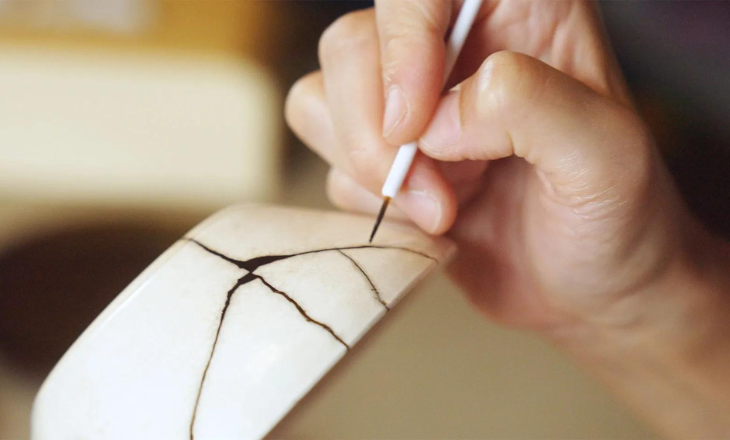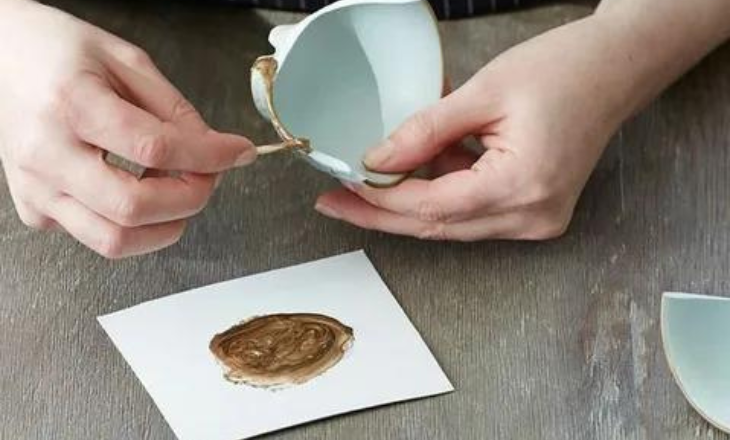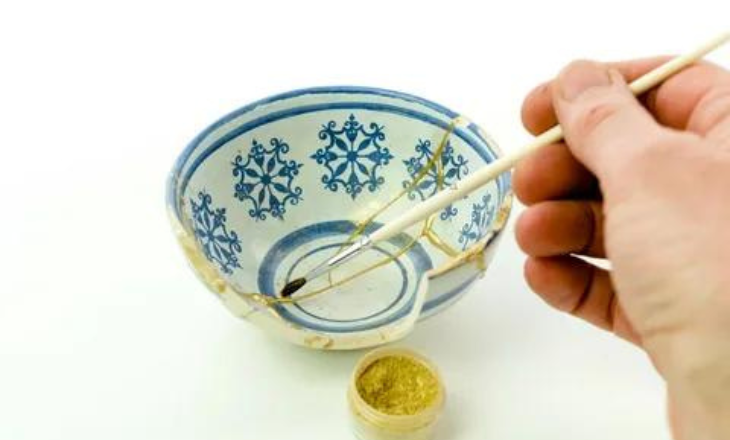The philosophy behind Kintsugi is not just about fixing broken objects; it’s about highlighting their history and journey through the mending process. Kintsugi pottery offers a refreshing perspective on the beauty of resilience and transformation. We have answered the frequently asked question of how to kintsugi.
The influential nature of Kintsugi lies in its ability to transcend mere physical repair and offer a metaphor for human existence. By celebrating the mended cracks with precious metals, this art form symbolizes how our scars can become part of our beauty, marking our experiences as valuable and worth cherishing.
The Art Of Japanese Broken Pottery
The art of Japanese broken pottery, or kintsugi, is a profound symbol of resilience and beauty in imperfection. Many people do not know it, so we have answered all these questions in our article. Kintsugi pottery embraces the flaws by filling them with lacquer mixed with powdered gold, silver, or platinum.

Kintsugi goes beyond mere physical mending; it embodies a philosophy of embracing life’s challenges and finding strength in vulnerability. It prompts us to see value in the scars left by time and experience. Kintsugi serves as a powerful metaphor for our human potential for healing and renewal.
Kintsugi reminds us that our imperfections are integral to who we are and can be instrumental in creating something even more remarkable than before. It encourages us to seek beauty in unexpected places.
What You’ll Need To Get Started Repairing Broken Pottery
A broken piece of pottery holds sentimental value and a story that is now fractured. But with a touch of creativity and the right tools, it can be reborn into something even more beautiful.
Enter Sandpaper, the unsung hero in this restoration saga. With its ability to smooth out rough edges and create a clean surface for the repair process, sandpaper plays a crucial role in preparing the broken pottery for its resurrection.
Slow-dry epoxy steps onto the stage, offering an effective adhesive and surprising versatility. This special epoxy is not only safe to use but can also safely come into contact with food, making it ideal for repairing items such as ceramic mugs or plates. Mix and apply the epoxy to the broken pottery using a toothpick or popsicle stick
How To Kintsugi
Follow the steps to practice how to use Kintsugi to fix the broken pieces. It is the complete guide to Japanese pottery, the art of repairing broken pottery with gold or silver lacquer.
Preparing the piece
Learn kintsugi by first selecting a broken ceramic or pottery item, and then delicately sanding the edges to remove sharp points. Start by choosing a broken ceramic or pottery item that holds personal significance Carefully sand the edges of your piece to remove any sharp points. Take this time to reflect on the imperfections of life and how they can ultimately lead to beauty and strength.
In Kintsugi, flaws are seen as part of an object’s history rather than something to be disguised, so take note of these imperfections with curiosity rather than judgment. This mindset allows you to fully embrace the philosophy behind Kintsugi, making your creative journey one of skillful craftsmanship and personal growth.
By gently sanding away rough edges with intention and care, you not only create a smooth surface ready for repair but also pay homage to the preciousness of what was once whole. This stage is more than just physical preparation; it’s an invitation to engage with the emotional depth inherent in each fragment.
Glue The Piece
Once you have carefully aligned the broken pieces, it’s time to apply the Kintsugi glue. Squeeze some glue onto the broken surface using a throwaway brush, toothpick, or even a popsicle stick. A thin layer of glue is sufficient to create a strong bond between the pieces without creating any obtrusive lumps or excess residue.

Precision and patience are key when applying the Kintsugi glue as you want to ensure that all fractures are adequately covered without allowing any excess glue to spill over the edges. The delicate art of using just the right amount of adhesive can make all the difference in achieving a seamless mend that does justice to the ancient Japanese philosophy of embracing imperfections and honoring resilience.
Apply The Gold
Mix the epoxy resin and gold dust to create a malleable compound that will fill in the cracks and accentuate them with shimmering beauty. The process requires patience and precision as you carefully paint along the fractures of the pottery, ensuring that every line is filled with the radiant mixture.

Once you’ve mixed the epoxy and gold dust to create a luscious, shimmering mix, it’s time to elevate your pottery with stunning golden accents. With delicate precision, carefully paint along the cracks in the pottery, allowing the rich gold mixture to seep into every crevice.
As you pour the gold dust onto your surface, envision each speck of brilliance adding depth and character to your piece. The art of Kintsugi pottery is a poignant reminder that our imperfections can become sources of strength and beauty when we approach them with compassion and creativity.
Cleaning Up
This careful process ensures that no valuable traces are lost, and it allows for a thorough examination of the recovered material. The water carries away the excess particles, revealing any hidden treasures, which becomes an exciting moment of anticipation. The satisfaction of seeing a glimmer of golden residue left behind reinforces the dedication and patience required for this rewarding activity.
After successfully washing off the bowl, one must let the pieces dry before proceeding further. Allowing ample time for drying ensures that every minute detail can be examined with precision and care. During this period, amateur prospectors often find unexpected specks or larger nuggets clinging to previously overlooked crevices.
Conclusion
The art of Kintsugi offers a profound lesson in embracing imperfections and finding beauty in brokenness Through the use of gold or silver lacquer, cracks, and fractures are not merely concealed but illuminated, symbolizing strength and transformation.
This ancient practice encourages us to see our flaws as opportunities for growth and reinvention, reminding us that imperfection is not something to be hidden but celebrated. Embracing the philosophy of Kintsugi allows us to find value in our own mended cracks and emerge stronger from life’s challenges. The transformative process of how to Kintsugi symbolizes strength and embracing the transformation journey.
FAQs
Which Glue Is Used For Kintsugi?
The different glues to use in Kintsugi: Four materials are generally used as glue, and in order of difficulty to apply, they are: urushi lacquer, cashew paint resin, synthetic resin, and epoxy glue.
Is Kintsugi Real Gold?
Most kintsugi repairs aren’t done using real gold. Instead, artists and restorers use a blend of brass, copper, and zinc to create a gold-effect lacquer. Visually, it tends to look no different from the real thing.
